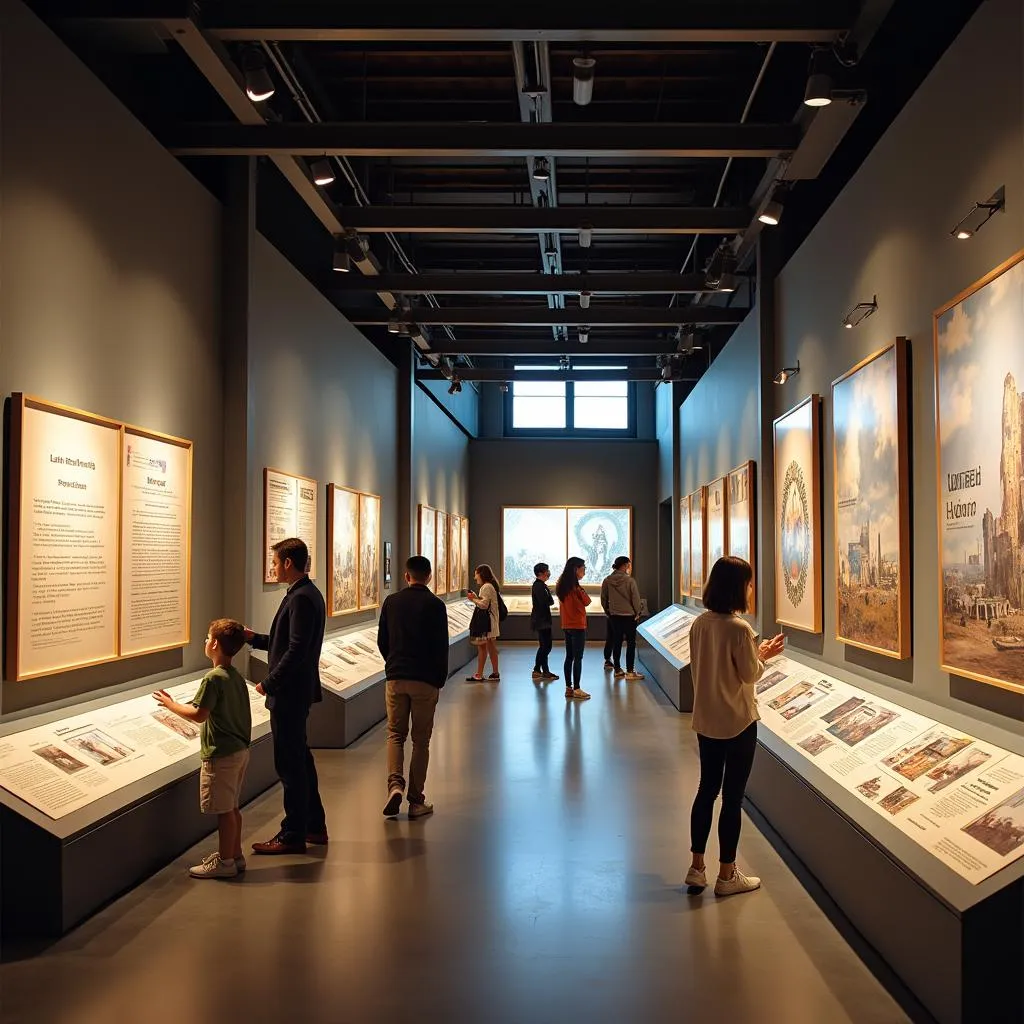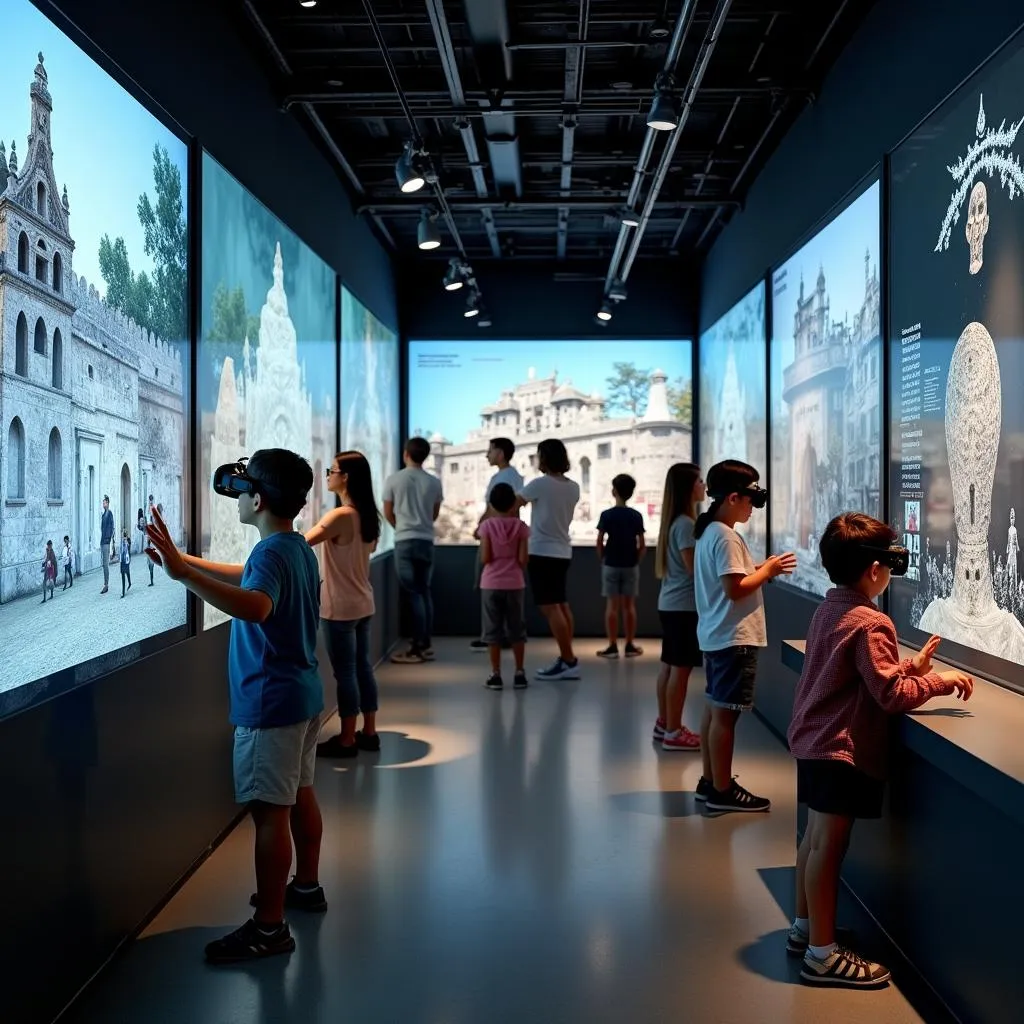Museums play a crucial role in preserving and promoting cultural heritage. This topic has appeared frequently in IELTS Writing Task 2 exams, and its importance is likely to continue in future tests. Let’s examine a relevant question that has been featured in past IELTS exams:
Some people think that museums should be enjoyable places to entertain people, while others believe that the purpose of museums is to educate. Discuss both views and give your own opinion.
Analyzing the Question
This question asks you to discuss two contrasting views on the purpose of museums: entertainment versus education. You need to:
- Explain why some people believe museums should focus on entertainment
- Discuss the perspective that museums’ primary purpose is education
- Provide your own opinion on the matter
Remember to support your arguments with relevant examples and maintain a balanced approach throughout your essay.
Sample Essay 1 (Band 8-9)
Museums have long been cornerstones of cultural preservation and education. While some argue that these institutions should prioritize entertainment, others maintain that their primary purpose is to educate. In my opinion, museums can and should serve both functions, with a slight emphasis on education.
Those who advocate for museums as entertainment venues argue that making these spaces more enjoyable will attract a wider audience. They believe that interactive exhibits, multimedia presentations, and engaging activities can make learning about history and culture more appealing to the general public. For instance, the Natural History Museum in London has incorporated virtual reality experiences and hands-on workshops, which have significantly increased visitor numbers and engagement.
On the other hand, proponents of museums as educational institutions emphasize their role in preserving and disseminating knowledge. They argue that museums are uniquely positioned to provide in-depth information about art, history, and science in a way that casual entertainment cannot match. The Louvre in Paris, for example, offers detailed audio guides and expert-led tours that provide visitors with a comprehensive understanding of the artworks and their historical context.
In my view, museums should strive to balance both entertainment and education, with a slight emphasis on the latter. While engaging presentations and interactive elements can certainly make learning more enjoyable, the core mission of museums should remain the preservation and sharing of knowledge. By incorporating entertaining elements into educational exhibits, museums can create a more accessible and memorable learning experience for visitors of all ages and backgrounds.
The importance of cultural heritage in modern society is undeniable, and museums play a crucial role in this regard. They serve as guardians of our collective history and culture, offering insights into the past that shape our understanding of the present. By combining education with elements of entertainment, museums can fulfill this important function while remaining relevant and appealing to contemporary audiences.
In conclusion, while entertainment can make museums more attractive to visitors, their fundamental purpose of education should not be compromised. A balanced approach that prioritizes learning while incorporating engaging elements is the ideal way for museums to serve society and preserve our cultural heritage.
 Museums balancing education and entertainment
Museums balancing education and entertainment
Sample Essay 2 (Band 6-7)
Museums are important places in our society, and people have different ideas about what they should do. Some think museums should be fun places to entertain people, while others believe they should focus on education. I think both views have good points, but education is more important.
People who say museums should be entertaining think this will make more people want to visit. They believe that if museums have fun activities and interesting displays, more people will come and learn about culture and history. For example, some science museums have games and experiments that visitors can try, which makes learning science more fun.
On the other hand, those who think museums should focus on education say that this is the main job of museums. They believe museums should teach people about art, history, and science in a serious way. Many museums have detailed information about their exhibits and offer guided tours to help people learn more.
In my opinion, museums should try to do both things, but education should be the main goal. While it’s good to make museums interesting and fun, the most important thing is to teach people about our culture and history. Museums can use some entertaining methods to make learning more enjoyable, but they shouldn’t forget their main purpose of education.
Why preserving cultural landmarks is important is something we can learn from museums. They help us understand our past and how it affects our present. By teaching people about different cultures and historical events, museums play a big role in preserving our heritage.
To conclude, I believe that while museums can be entertaining, their main job should be to educate people. They can use some fun activities to make learning more interesting, but education should always be the most important thing. This way, museums can help preserve our culture and teach people about our history in an effective way.
Sample Essay 3 (Band 5-6)
Museums are important places in our cities. Some people think they should be fun, but others say they should teach us things. I think both ideas are good.
People who want museums to be fun say this will make more people come. They think if museums have interesting things to do, more people will visit and learn. For example, some museums have games about history that people can play.
Other people say museums should teach us. They think museums should give us information about art and history. Many museums have lots of information about the things they show and people who work there can explain more.
I think museums should try to do both. It’s good to make museums fun, but teaching is also very important. If museums are fun and teach us things, more people will come and learn about our culture.
Museums help us learn about our past. How technology influences cultural preservation is something we can see in modern museums. They use new technology to show old things in interesting ways.
In conclusion, I think museums should be both fun and educational. This way, they can teach us about our culture and history while also being interesting places to visit.
 Interactive museum exhibit showcasing cultural heritage
Interactive museum exhibit showcasing cultural heritage
Explanation of Band Scores
Band 8-9 Essay:
- Fully addresses all parts of the task with a clear position
- Presents well-developed ideas with logical organization
- Uses a wide range of vocabulary accurately and flexibly
- Demonstrates a wide range of grammatical structures with full flexibility and accuracy
- Uses cohesive devices effectively
Band 6-7 Essay:
- Addresses all parts of the task, though some aspects may be more fully covered than others
- Presents relevant main ideas but some may be inadequately developed
- Uses an adequate range of vocabulary with some inaccuracies
- Uses a mix of simple and complex sentence forms with some errors
- Uses cohesive devices but not always appropriately
Band 5-6 Essay:
- Addresses the task only partially; format may be inappropriate in places
- Expresses position but development is not always clear
- Uses limited range of vocabulary; errors may cause some difficulty for the reader
- Uses only a limited range of structures with only rare use of subordinate clauses
- May not use cohesive devices effectively
Key Vocabulary to Remember
- Cultural preservation (noun) – /ˈkʌltʃərəl ˌprɛzərˈveɪʃən/ – The protection and conservation of cultural heritage
- Interactive exhibits (noun phrase) – /ˌɪntərˈæktɪv ɪgˈzɪbɪts/ – Museum displays that encourage visitor participation
- Disseminate (verb) – /dɪˈsɛmɪneɪt/ – To spread or give out information widely
- Engaging (adjective) – /ɪnˈgeɪdʒɪŋ/ – Attractive and able to hold one’s attention
- Cornerstones (noun) – /ˈkɔːrnərˌstoʊnz/ – Fundamental or essential parts of something
- Proponents (noun) – /prəˈpoʊnənts/ – People who advocate for or support something
- Comprehensive (adjective) – /ˌkɑːmprɪˈhɛnsɪv/ – Including or dealing with all aspects of something
- Accessible (adjective) – /əkˈsɛsəbl/ – Easy to understand or appreciate
- Collective history (noun phrase) – /kəˈlɛktɪv ˈhɪstəri/ – The shared past experiences of a group or society
- Heritage (noun) – /ˈhɛrɪtɪdʒ/ – Valued objects and qualities passed down from previous generations
In conclusion, the topic of museums and their role in cultural preservation is a significant one in IELTS Writing Task 2. Future exam questions might explore related themes such as:
- The impact of technology on museum experiences
- The role of museums in promoting cultural understanding
- Government funding for museums versus other public services
- The balance between preserving artifacts and making them accessible to the public
To practice effectively, try writing your own essay on the question provided in this article. Consider posting your essay in the comments section for feedback and discussion with other learners. This active approach to learning can significantly improve your IELTS Writing skills.


